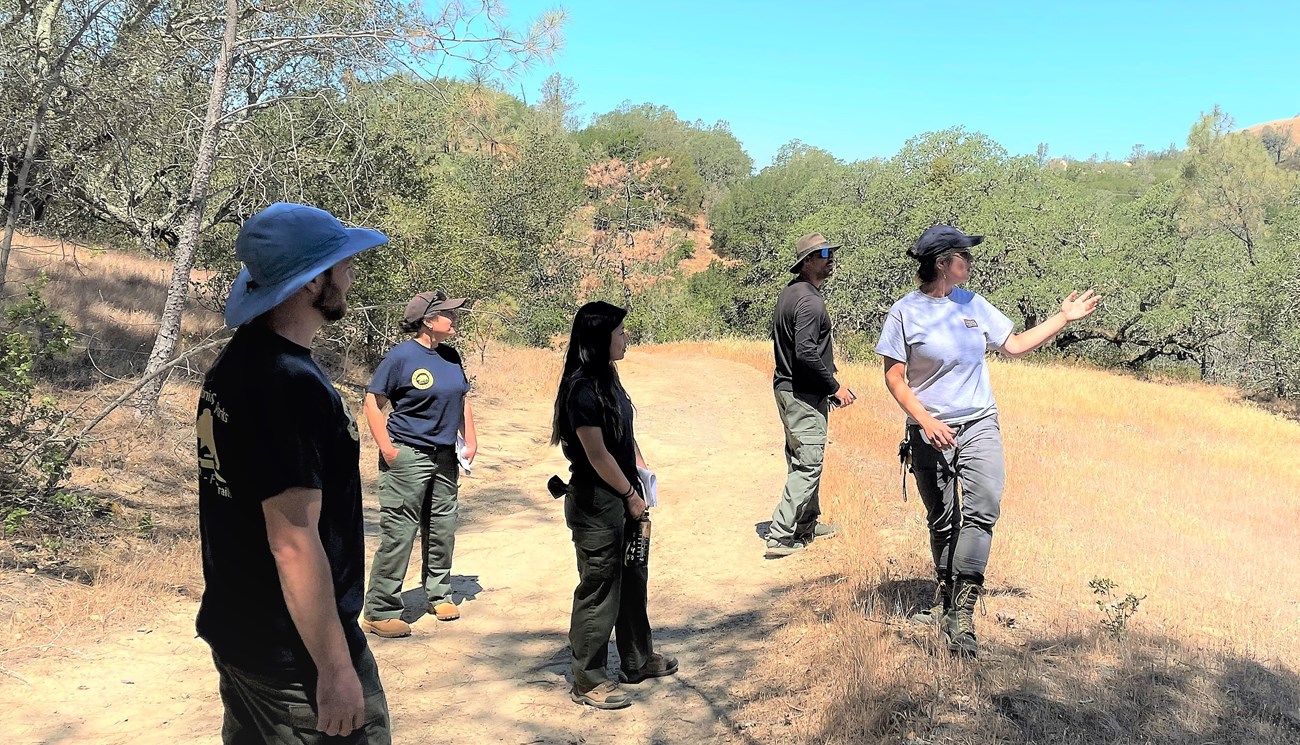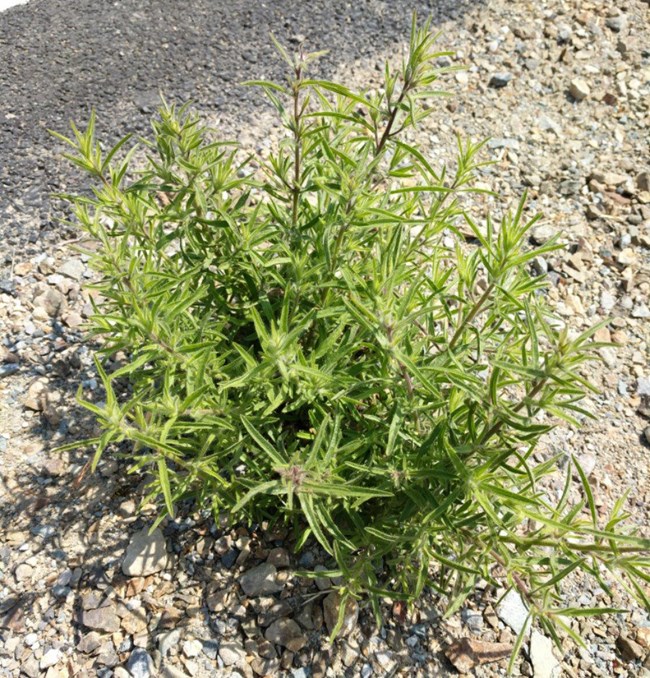Last updated: March 27, 2023
Article
One Tam Weed Program Spreads Across California
By One Tam Conservation Management Specialist Rachel Kesel and Golden Gate National Parks Conservancy Science Communication Specialist Michela Gentile

Leah Gardner / California State Parks
February 2023 - Perhaps the last thing a weed cares about is where one property ends and another begins. As part of their efforts to collaboratively care for Mt. Tamalpais in Marin County, the five One Tam partners—National Park Service, California State Parks, Marin Water, Marin County Parks, and Golden Gate National Parks Conservancy—teamed up to create an Early Detection Rapid Response (EDRR) program to manage weeds across boundaries.
EDRR means finding and treating patches of priority invasive plants before they can affect the health of an ecosystem. To learn more about how the One Tam program works, you can view the One Tam EDRR protocol (developed in 2016 and subsequently revised). To really get into the weeds, check out the detailed analysis of the program’s first three years in the Early Detection Beyond Boundaries report (Kesel and Greenberger, 2020).
This successful model, which began with a regional partnership, is now spreading across the state through partnership: Parks Conservancy and California State Parks staff have worked together to create a robust EDRR training program designed to jumpstart efforts at districts around the state. This endeavor began in 2019 with an update to the State Parks EDRR handbook, which provides foundational guidance on developing species lists, survey geography, and data collection methods. This work has been led by Rachel Kesel, One Tam Conservation Management Specialist at the Golden Gate National Parks Conservancy, and Leah Gardner, Senior Environmental Scientist at California State Parks.

NPS / Sarah Inman
The training program begins with a State Parks district consultation followed by a two-day training on district land. The model emphasizes decision making and program development toward a pilot implementation season. A follow-up session reviews lessons learned and protocol revision. In addition to training State Parks districts, Parks Conservancy staff have delivered trainings to other agencies and a abridged version at the California Invasive Plant Council Symposia in 2022. Altogether, the training program has reached over 400 invasive plant practitioners as of this writing. Five additional State Parks districts are scheduled for training by the end of 2023.
Meanwhile, One Tam is continuing its efforts in Marin County—and encouraging the public to be a partner in managing weeds, too. While the One Tam teams survey Mt. Tamalpais for priority weeds each year, their spring and summer surveys are not perfectly aligned with the late emergence of stinkwort. Recording observations of stinkwort using iNaturalist or Calflora is a great way to help alert the team to new patches. Team members scan both platforms for new observations stinkwort and other species of interest in the focus area. In fact, a community member contributed an iNaturalist record of stinkwort in 2018 that pointed to a patch previously unknown to the team. Now, following removal efforts, that patch is greatly reduced in size!
For more information
- San Francisco Bay Area Inventory & Monitoring Network Invasive Plants Early Detection webpage
- Contact One Tam Conservation Management Specialist Rachel Kesel
See more from the Bay Area Nature & Science Blog
